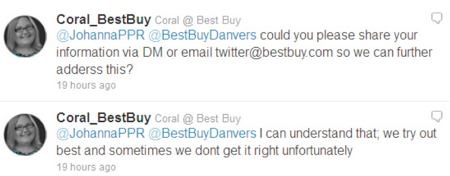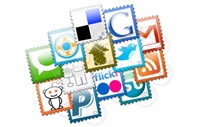Six Tips for Staying Productive During the Lazy Days of Summer
 Here in New England, we’ve enjoyed an amazing stretch of summer weather and all the fun that comes with it. With summertime distractions beckoning, I’ll be the first to admit it’s sometimes a challenge to stay focused on my work. Fortunately, working in a virtual environment, the folks at PerkettPR pretty much have productivity down to a science. In fact, our team has been sharing their tips over on our Facebook page, and below we’ve compiled some tried and true suggestions to help you maintain focus, improve your productivity and find time to enjoy the dog days of summer.
Here in New England, we’ve enjoyed an amazing stretch of summer weather and all the fun that comes with it. With summertime distractions beckoning, I’ll be the first to admit it’s sometimes a challenge to stay focused on my work. Fortunately, working in a virtual environment, the folks at PerkettPR pretty much have productivity down to a science. In fact, our team has been sharing their tips over on our Facebook page, and below we’ve compiled some tried and true suggestions to help you maintain focus, improve your productivity and find time to enjoy the dog days of summer.
- Manage your inbox – In the modern workplace, email has taken over as the primary mode of communication. Information is shared, requests are made, assignments are given, status is provided, notes are taken, and countless other workplace activities are all captured and managed via email. Sure, there are numerous ways to search and filter email content to find what you need, but highly productive – and effective – people almost always practice the inbox-zero method.
Here are five simple tips to reign in your inbox:
- Group emails by discussion to organize and reduce the appearance of all those separate emails in your box.
- Read email from the bottom up (older emails first) – and if you’ve grouped emails by discussion, you only need to read (and save) the most recent email, which includes the entire thread.
- Take action on every email immediately upon reading it: file it, respond to it, flag it for future action, or delete it.
- Create a filing system and use it. You can file by account, project or people. For me, it’s one for each account then subfolders for each program delivered for that account.
- Aim for zero-inbox, but if you can’t get there, treat your inbox like an action list – only keep those items you are currently working on. Once they are completed – file or delete them.
- Get up earlier – I am NOT a morning person. But, I have to say, when I do get up early, I almost always have a more productive day. Try setting the alarm 15 minutes earlier. If you can add 15 extra minutes to your mornings, I’m willing to bet money you’ll feel more energized, less stressed, and more productive.
- Take breaks – No matter how busy you are or how lengthy your to-do list, it’s important to give yourself a break. Your mind just doesn’t function effectively or efficiently when you’re tired. Take at least three short breaks a day. We highly recommend taking every opportunity to get outside as well. Go for a short walk, eat lunch al fresco, make a coffee run, anything that gets you some fresh air and vitamin D will help break up the day and invigorate your body and mind.
- Limit distractions – We’re constantly juggling distractions at work: from people stopping by your desk to phone calls to incoming emails, IMs, Facebook notifications and more. Luckily, last month we featured a Q&A with Robert Strohmeyer author of PCWorld‘s Simply Business, a popular business productivity blog. In his role, Robert routinely researches and writes about productivity tools and techniques and tests them out himself. Robert shared his top productivity tips with us.
“Productivity is never an accident. It is always the result of a commitment to excellence, intelligent planning, and focused effort.” – Paul J. Meyer
He notes that his biggest productivity killer is distractions. To combat this, he relies on the Pomodoro Technique, which requires the removal of all distractions (turn off IM & email, mute your phone, close the door) and total focus on one task or assignment for 25 minutes, followed by a 5-minute break. He then repeats this cycle throughout the day. I’d never heard of this technique before, but I’m intrigued. In fact, to develop this post, I’ve instituted the Pomodoro Technique and so far it’s working! 😉
- Organize your tasks – One of my favorite tips comes from our own Jennifer Hellickson, a veritable productivity guru at PerkettPR. She suggests, “Chunk out like-minded tasks together. Set aside time to make calls, and do them all at once. Schedule times during the day to check your e-mail, update social media accounts and do other things like writing or research to avoid splintering your attention too much.” Simple and brilliant.
- Organize your day – I, and several of my colleagues, are Franklin Covey devotees, but even if you use a plain old notebook or generic planner to write down and prioritize your tasks, it’ll make a word of difference. Especially in the agency world where reactionary activity is often the norm, you need a way to record and monitor your priorities to help you stay on track with your deliverables. Plus, once you write it down, you can achieve the simple, but uplifting sense of accomplishment every time you cross something off your list.
Regardless of seasonal distractions, maintaining a high degree of productivity is always a challenge. Try some of the tips above and let us know how they work out for you. Or, if you have a favorite tip we missed, please share it in the comments. I don’t know about you, but I need all the help I can get – there’s a hammock with my name on it out there!


 Many of our clients are passionate entrepreneurs and CEOs with brilliant ideas and products. Our role (or process for?) in bringing products to market begins as soon as we engage with a prospect. Below are five of the typical questions we ask each of our clients before we set a launch date and begin planning. If you are thinking of launching in the near term, ask yourself these questions to ensure you are fully prepared, before you make the investment in a launch and open the flood gates on PR activities:
Many of our clients are passionate entrepreneurs and CEOs with brilliant ideas and products. Our role (or process for?) in bringing products to market begins as soon as we engage with a prospect. Below are five of the typical questions we ask each of our clients before we set a launch date and begin planning. If you are thinking of launching in the near term, ask yourself these questions to ensure you are fully prepared, before you make the investment in a launch and open the flood gates on PR activities:
 While some brands are smarter and more savvy than others (
While some brands are smarter and more savvy than others ( 90% of consumers trust recommendations from advocates (
90% of consumers trust recommendations from advocates ( I waited all day. No call. I followed up that night at 8:00 pm. I waited on hold for 15 minutes before I got a “live person” at the store. She transferred me to customer service where the phone rang, and then I was transferred back to the same person. She transferred me again. And then I was on hold. Again. At some point I hung up and called back. Got the same “live person.” She transferred me. Again. On hold. This cycle lasted for nearly two hours. I finally hung up and tried calling back. The store was closed.
I waited all day. No call. I followed up that night at 8:00 pm. I waited on hold for 15 minutes before I got a “live person” at the store. She transferred me to customer service where the phone rang, and then I was transferred back to the same person. She transferred me again. And then I was on hold. Again. At some point I hung up and called back. Got the same “live person.” She transferred me. Again. On hold. This cycle lasted for nearly two hours. I finally hung up and tried calling back. The store was closed.


 In our fast-paced, often furious, line of work, we communicate with dozens upon dozens of people every week. Few stand out. Accomplished
In our fast-paced, often furious, line of work, we communicate with dozens upon dozens of people every week. Few stand out. Accomplished 

